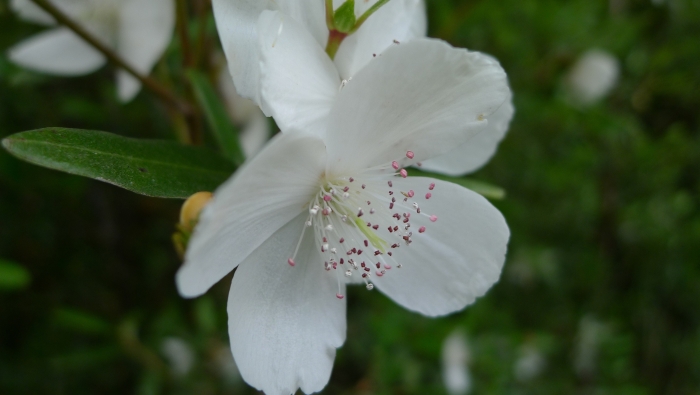Leatherwood
(Eucryphia lucida)
Leatherwood (Eucryphia lucida)
/
/

John Tann
CC BY 2.0
Image By:
John Tann
Recorded By:
Copyright:
CC BY 2.0
Copyright Notice:
Photo by: John Tann | License Type: CC BY 2.0 | License URL: https://creativecommons.org/licenses/by/2.0 | Uploader: Flickr upload bot | Publisher: Wikimedia Commons | Title: Eucryphia_lucida_Leatherwood_flower.jpg | Notes: {{Information |Description={{en|1=The fruit of Fortune's spindle (''[[w:Euonymous Fortunei|Euonymus fortunei (Turcz.) Hand.-Mazz. 'Agathe']]'') Botanical Garden [[w:Darmstadt|Darmstadt]], Germany}} {{de|1=Die Frucht des Kriech-Spindelstrauchs (''[[ |












Estimated Native Range
Summary
Eucryphia lucida, commonly known as Leatherwood, is an evergreen tree or large shrub native to the cool temperate rainforests of Tasmania. It exhibits a variable growth habit, typically ranging from 2–10 m (6.6–32.8 ft) in height, but under optimal conditions, it can reach up to 25 m (82 ft). The small, elliptical, dark green glossy leaves measure 2–4 cm (1–1.5 in) in length and contribute to the dense foliage. The white flowers, 2.5–4 cm (1–1.5 in) in diameter, bloom in spring and summer, resembling small single roses with a strong fragrance that intensifies on warm days. These flowers are particularly showy due to their size and the contrast they create against the foliage. The sticky sap on the flower parts is a distinctive feature. After flowering, leathery capsules develop and mature in autumn, adding to the plant’s ornamental value.
Leatherwood is valued for its attractive, fast-growing nature and the sweetly scented, showy flowers that attract pollinators. It is used in gardens for ornamental planting, as a specimen tree, or for creating informal hedges. Leatherwood prefers well-drained, humus-rich soil and benefits from a sheltered position that mimics its native understory environment. While it tolerates full sun, it thrives in part shade with consistent moisture. Regular pruning is recommended to maintain a neat shape and promote healthy growth. It is relatively free from major pests and diseases but can be susceptible to root rot in poorly drained soils.CC BY-SA 4.0
Leatherwood is valued for its attractive, fast-growing nature and the sweetly scented, showy flowers that attract pollinators. It is used in gardens for ornamental planting, as a specimen tree, or for creating informal hedges. Leatherwood prefers well-drained, humus-rich soil and benefits from a sheltered position that mimics its native understory environment. While it tolerates full sun, it thrives in part shade with consistent moisture. Regular pruning is recommended to maintain a neat shape and promote healthy growth. It is relatively free from major pests and diseases but can be susceptible to root rot in poorly drained soils.CC BY-SA 4.0
Plant Description
- Plant Type: Tree
- Height: 2-12 feet
- Width: 2-10 feet
- Growth Rate: Moderate
- Flower Color: White
- Flowering Season: Spring, Summer
- Leaf Retention: Evergreen
Growth Requirements
- Sun: Full Sun, Part Shade
- Water: Medium
- Drainage: Medium, Fast
Common Uses
Bee Garden, Border Plant, Fragrant, Hedges, Low Maintenance, Salt Tolerant, Showy Flowers
Natural Habitat
Cool temperate rainforests of Tasmania
Other Names
Common Names: Pinkwood
Scientific Names: , Eucryphia lucida, Eucryphia billardieri, Carpodontos lucida,
GBIF Accepted Name: Eucryphia lucida (Labill.) Baill.